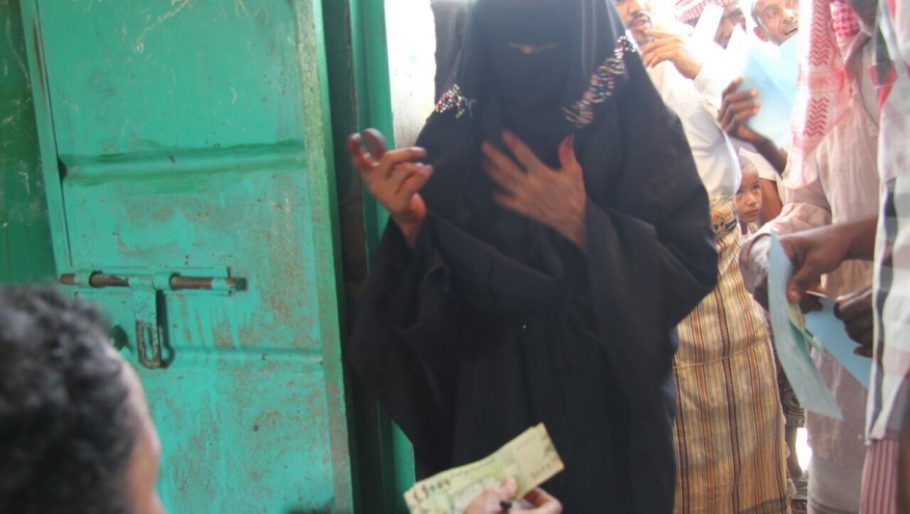Cash Transfers in Remote Emergency Programming: Focus on risk mitigation

Can you explain how the need for guidance on remote cash transfer programming was identified?
NRC and ECHO saw that humanitarian agencies need to carry out cash transfers in increasingly diverse contexts, many with significant access constraints. In those circumstances, programme staff find themselves frustrated by existing resources that often don’t seem relevant.
NRC has traditionally positioned itself as a direct implementer focusing on key sectors. In some remote emergencies, adopting an approach essentially based on partnerships with local actors has meant quite a bit of work equipping the organisation with the right set of standards, tools and procedures. Some of these are useful to share, including the materials of the Remote Cash Project.
I’ve been working with cash at NRC since 2008, first in Afghanistan and then elsewhere. In one shelter project using cash, we found ourselves without manager access to a key area with lots of half-finished work. We struggled to adapt to a remote approach because we didn’t have the experience or directly relevant materials.
The Remote Cash Project therefore aims to support implementing agencies by creating a dedicated set of resources based on existing knowledge, learning, practices and principles within the sector. There are plenty of cash handbooks and even a couple of remote programming guidelines available – the Remote Cash Project guidelines are therefore a set of simplified CTP materials viewed through a remote programming lens.
|
Objectives
|
What are the key areas of remote cash transfer programming that differs from other contexts or from remote in-kind assistance?
Saying ‘it’s just good programming’ is true but not especially helpful. Getting the basics right (PCM in the right order, needs-based design, resisting the temptation to design a ‘cash project’) will take you far, but there’s a bigger body of experience and knowledge on remote emergency cash than a newcomer might expect. The main requirement of implementing remotely is to recognise the centrality of quality risk management implying close monitoring of outcomes and processes.
Trust is the key commodity, both when dealing with the challenges of remote management or partnerships, and when addressing stakeholders’ questions and sometimes fears about cash. The skills needed for this, both among managers and remote staff or partners, will be crucial to the success of the project.
What would be key factors to consider when assessing the feasibility of remote cash transfers?
Good contextual and market analysis will quickly narrow down the options. A project manager might wake in the morning thinking about the wonderful menu of cash transfer mechanisms available, then remember where they are and by evening trying to find one mechanism that might work, just well enough.
The guidelines offer what we believe are the lightest and most enabling tools for assessing context, markets and risks in remote emergencies. For example, whenever possible, standard tools like the RAM are best, but if this is not possible due to limited access, the guidelines have a much shorter Emergency Market Assessment tool. Using lighter tools will mean a less in-depth understanding of course, and so introduce different risks which must be recognised and worked with. But they might make possible a project that could not happen otherwise.
Risks of fraud or diversion, not least in relation to terrorism financing, are at the forefront of donors’ preoccupations. How can agencies reduce any such risk when implementing remote cash transfers?
This family of risks is identical in nature for cash and in-kind, and we’ve got to keep working to explain what we do and get risks treated in the same rigorous way across modalities. I hear ‘fungibility’ sometimes cited as a risk of cash, but this just means people can spend it – someone is using an unfamiliar sounding work to suggest that this is somehow subversive.
So excellent and informed risk analysis, coupled with really good communication of this to donors and other stakeholders, is key to building trust and getting good projects funded. There are lots of suggestions in the guidelines, but underlying them all is a properly structured analysis and design process – only evidence allows evidence-based decisions.
What’s next for the Remote Cash Project?
The guidelines for Cash Transfers in Remote Emergency Programming have been shared in English. French and Arabic versions, and training packages tailored to remote programming relationships, will follow later this year.
Main image: Oxfam


